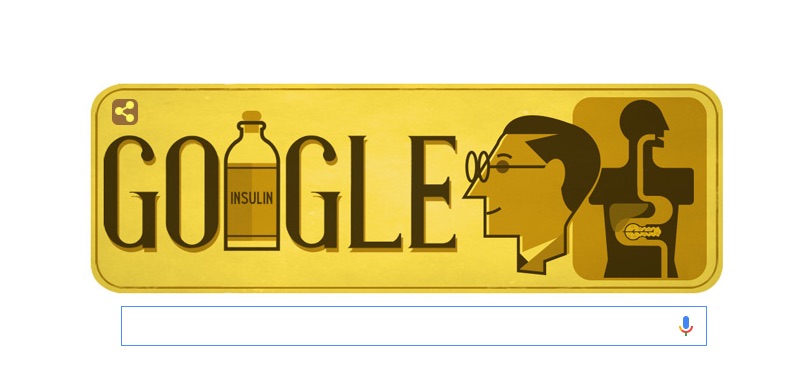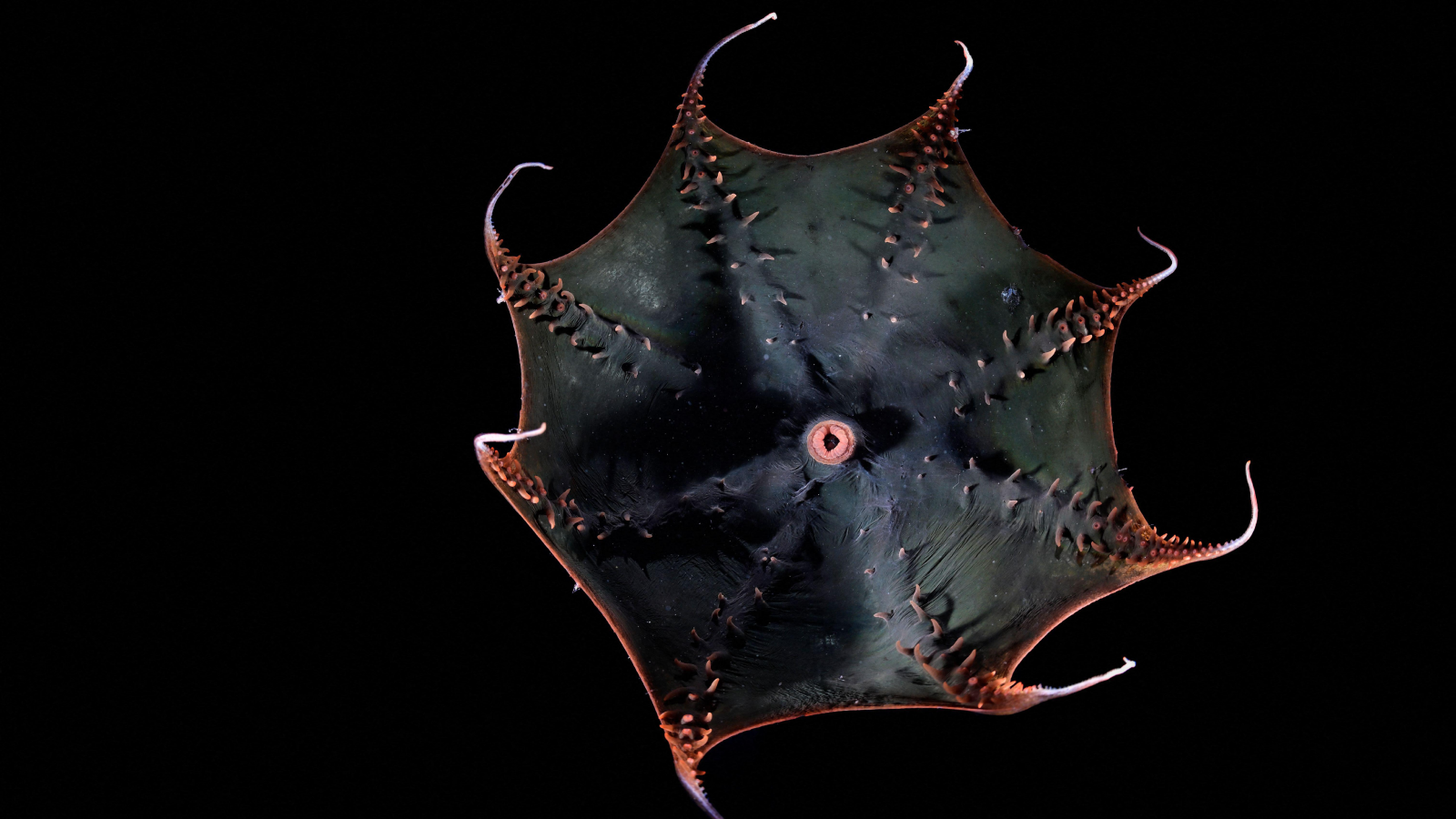
Everyone raise a glass of chocolate milk!
Today's Google Doodle honors Frederick Banting, the doctor who first found a way to give insulin to patients with diabetes, nearly 100 years ago. Insulin is the hormone that tells cells to let in sugar from the blood, allowing the body to use energy from food as fuel. People with diabetes either do not produce enough insulin (Type 1 diabetes) or have body cells that don't respond well to insulin (Type 2 diabetes).
Banting's work, which has saved the lives of millions of people with diabetes, garnered the Canadian doctor the Nobel Prize in Medicine in 1923. Today would have been Banting's 125th birthday. [Top 5 Nobel Prize Goof-Ups]
Insulin is made by the pancreas, which Banting began researching in 1920 as a captain in the Canadian army. At the time, researchers suspected that diabetes resulted from a deficiency in some hormone that came from certain clusters of cells in the pancreas, but they didn't know exactly how to extract that hormone. People were already calling the hormone insulin, according to the American Diabetes Association.
Banting believed he could extract this substance, and began his first experiments with dogs. The experiments involved closing off a duct in the dogs' pancreases, and then extracting insulin from those ducts.
"Intravenous injections of extract from dog's pancreas, removed from seven to 10 weeks after ligation of the ducts, invariably exercises a reducing influence upon the percentage sugar of the blood and the amount of sugar excreted in the urine ... the extent and duration of the reduction varies directly with the amount of extract injected," Banting and his colleague Dr. C. Herbert Best wrote in a 1922 paper published in the Journal of Laboratory and Clinical Medicine.
Eventually, Banting realized that waiting for the duct to produce the substance after closing it off wasn't necessary, and he was able to extract a small quantity of the hormone, according to a 2014 review article in the journal Diabetes Spectrum.
Get the world’s most fascinating discoveries delivered straight to your inbox.
In 1921, he developed an alternate method of extracting insulin, by mixing ground cow pancreas and alcohol, then filtering rinsing, and sterilizing the resultant mixture. He tested the effects of this solution on dogs, according to the Diabetes Spectrum article.
The first patient to receive the medication was a 14-year-old boy named Leonard Thompson. When he came to see Banting, he weighed just 65 pounds and gave off the sickly sweet smell of acetone, a telltale sign that the body is in the later stages of the disease. The second person to receive the drug, in 1922, was a house officer named Ed Jeffery, whose blood sugar dropped after he received insulin.
Banting and his team quickly moved to make larger batches of the drug and entered into an agreement with drug maker Lilly. By 1923, the first commercial insulin was available, according to the article.
Invariably fatal
Before Banting's discovery, Type 1 diabetes, in which the body attacks the insulin-producing cells in the pancreas, was invariably fatal. Without it, sugar has no way to leave the blood and enter the body cells, so it accumulates in the blood, while the muscles and other tissues are starved for energy. The kidneys try to flush out the excess sugar in the blood by causing frequent urination, which leads to dehydration, causing people to be very thirsty, according to the American Diabetes Association.
Because the body can no longer use much of the sugar in the blood for energy, the body turns to burning fat, and people with the disease begin wasting away. Eventually, this process becomes a runaway reaction that leads to a diabetic coma and death.
The formal name of diabetes, diabetes mellitus, comes from the Greek word for a siphon, "diabainein," and from the word "mellitus," which means "like honey," because people who have the disease frequently urinate and their pee smells sweet. The disease has been known since antiquity, and many have tried to treat it. In ancient Egypt, doctors mixed water from bird ponds with various roots and herbs, such as elderberry, fibers from a local plant, beer, cucumber flowers and dates, according to Diabetes Spectrum. By 1916, Massachusetts scientist Elliott Joslin had showed that a high-fat, low carbohydrate diet could slow the progression of the disease, although people still succumbed to it eventually.
Original article on Live Science.

Tia is the editor-in-chief (premium) and was formerly managing editor and senior writer for Live Science. Her work has appeared in Scientific American, Wired.com, Science News and other outlets. She holds a master's degree in bioengineering from the University of Washington, a graduate certificate in science writing from UC Santa Cruz and a bachelor's degree in mechanical engineering from the University of Texas at Austin. Tia was part of a team at the Milwaukee Journal Sentinel that published the Empty Cradles series on preterm births, which won multiple awards, including the 2012 Casey Medal for Meritorious Journalism.


